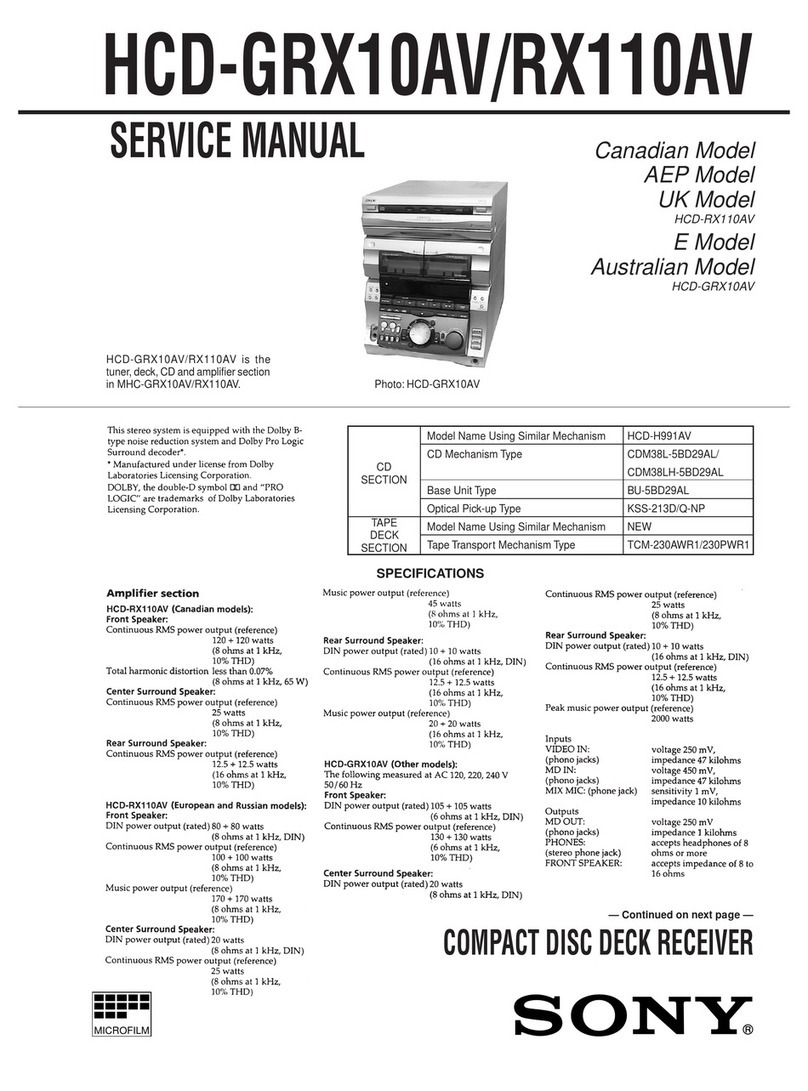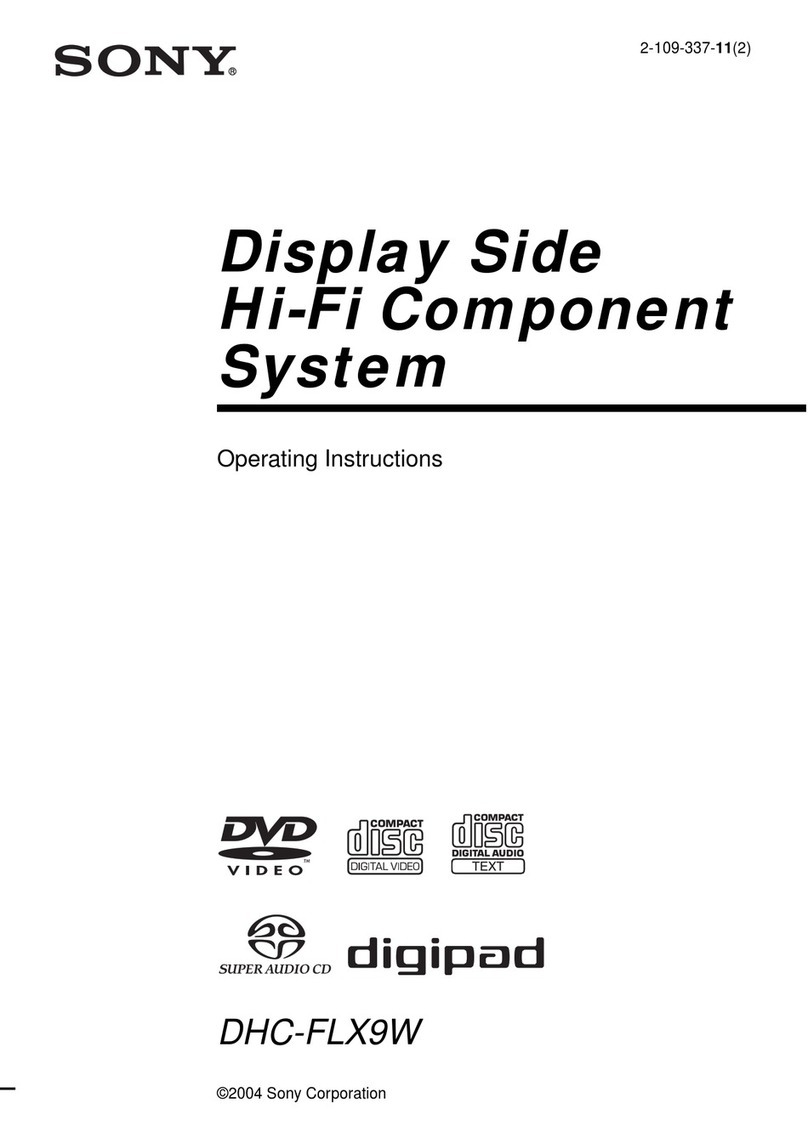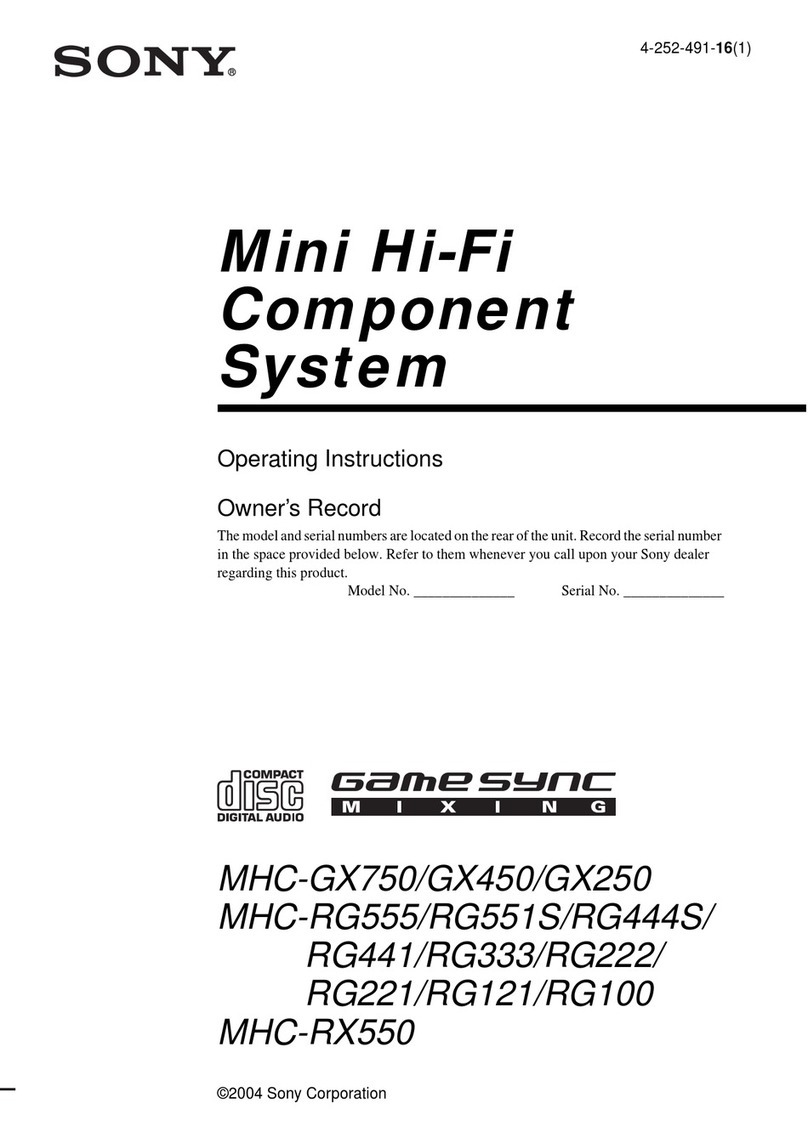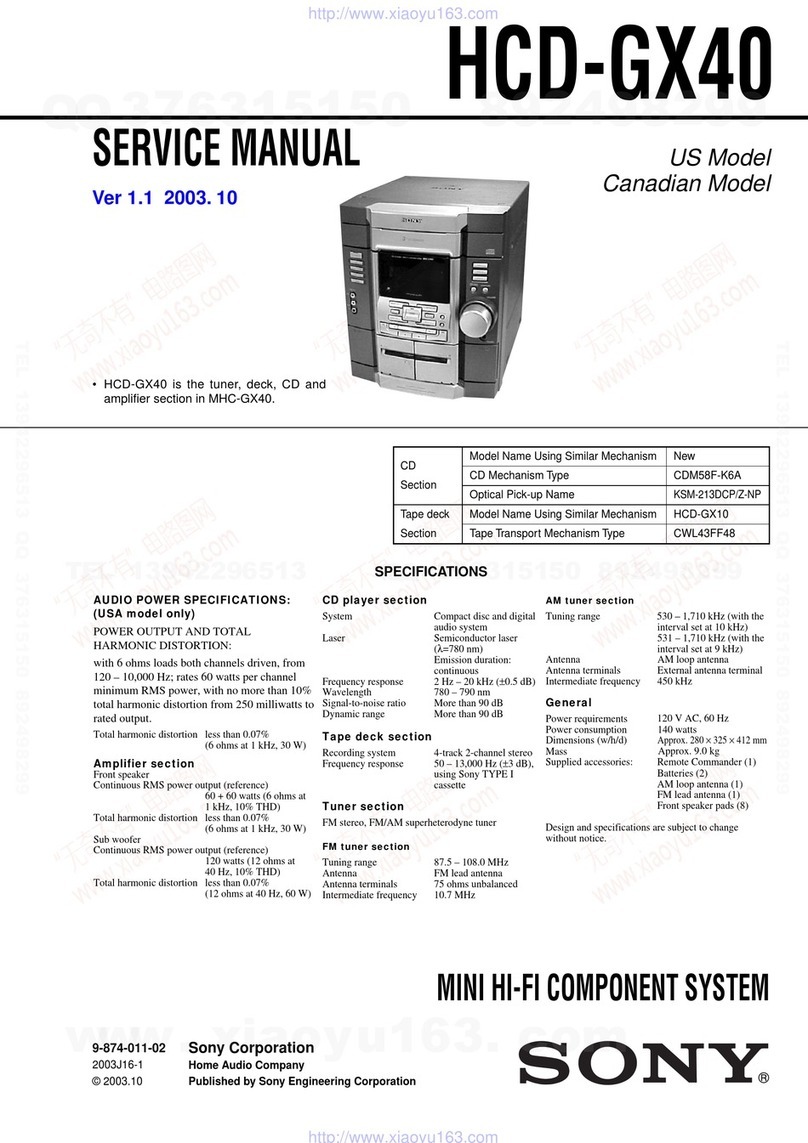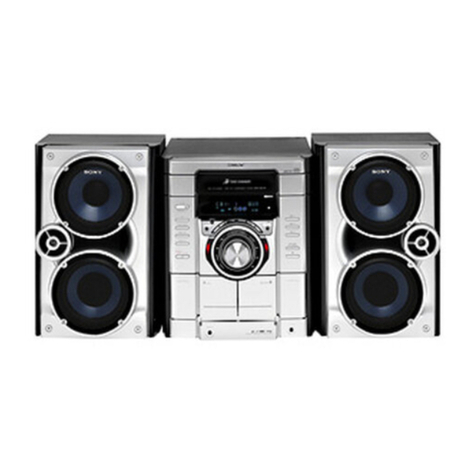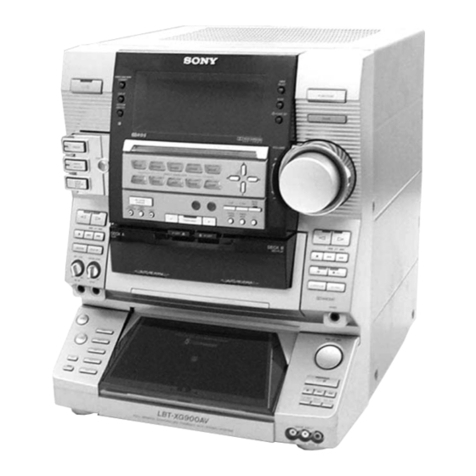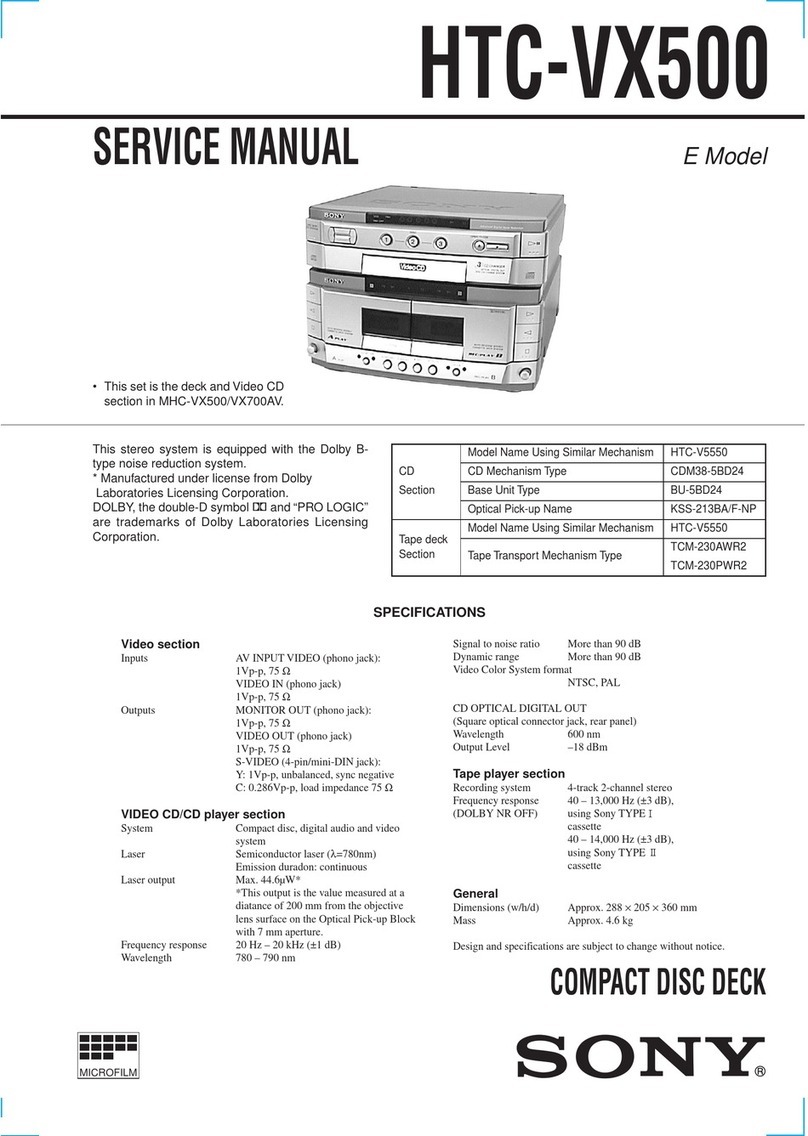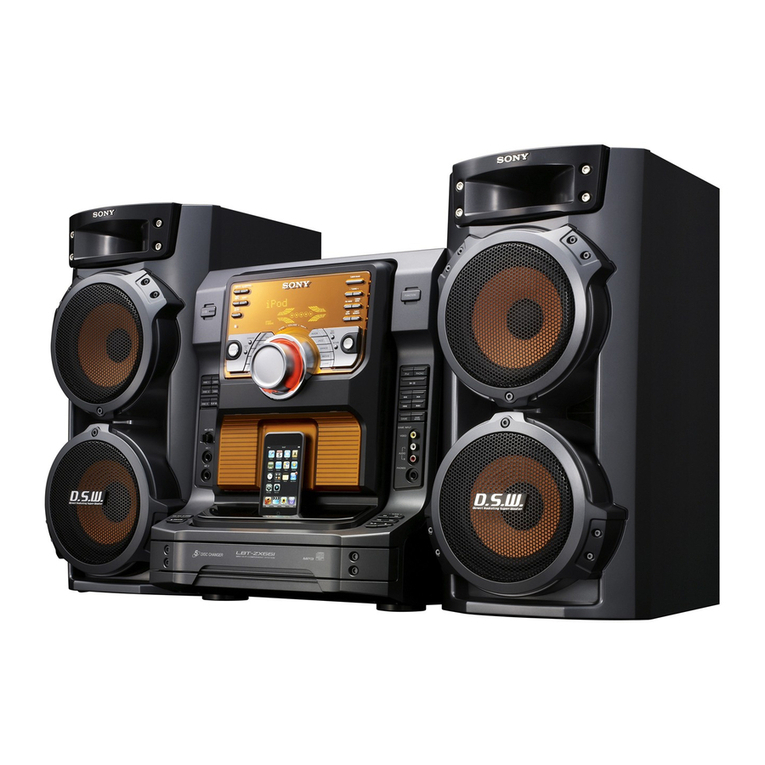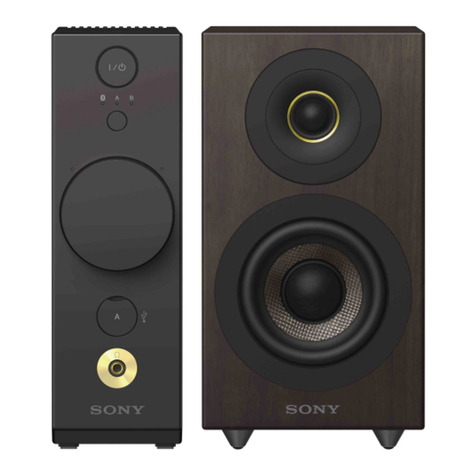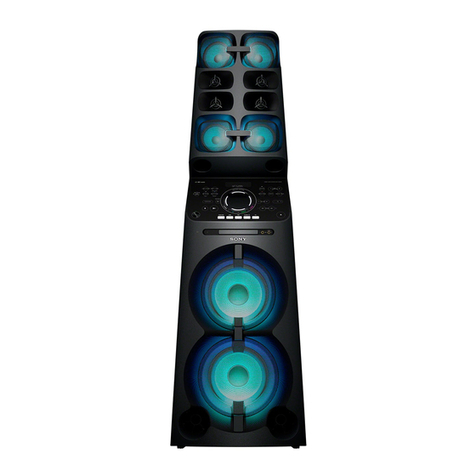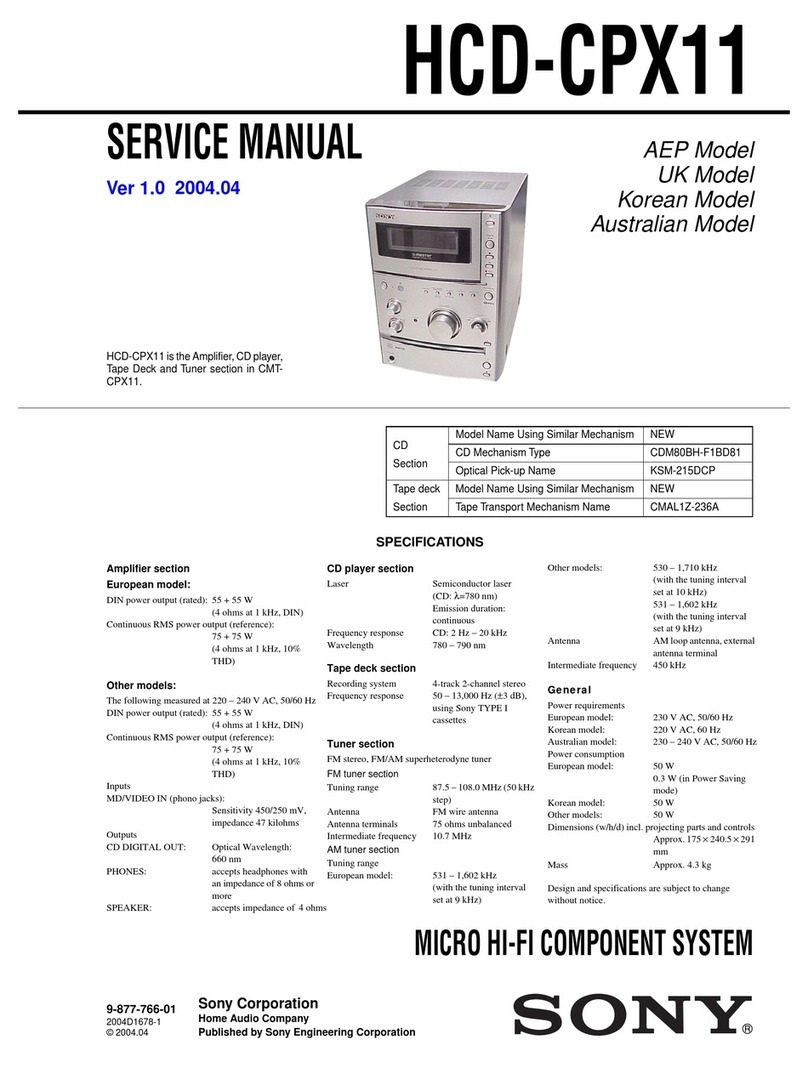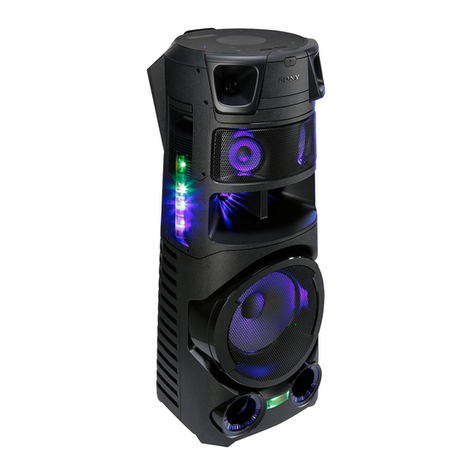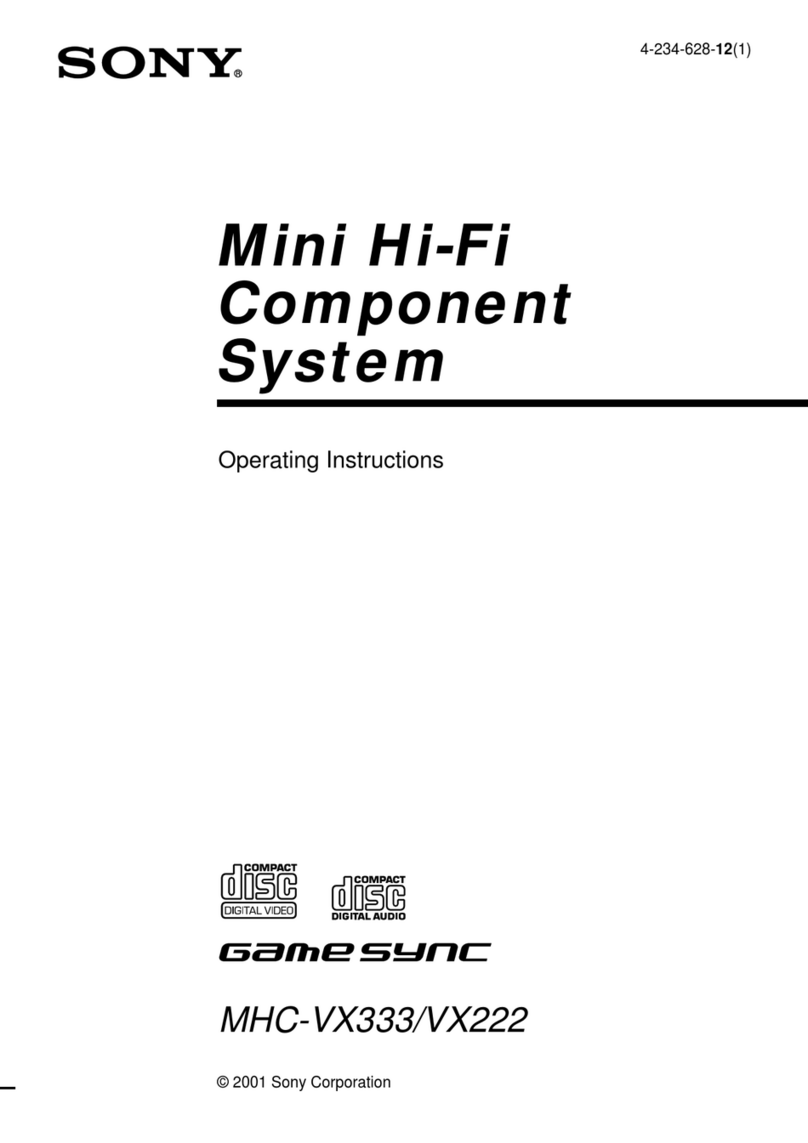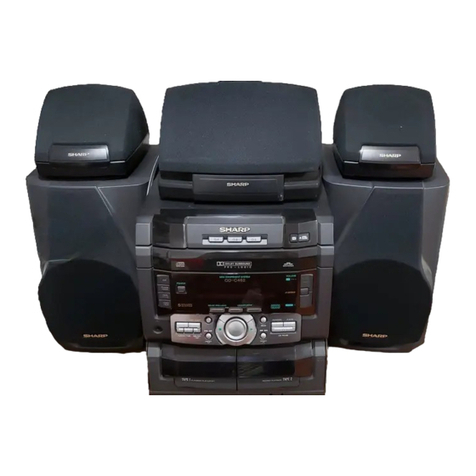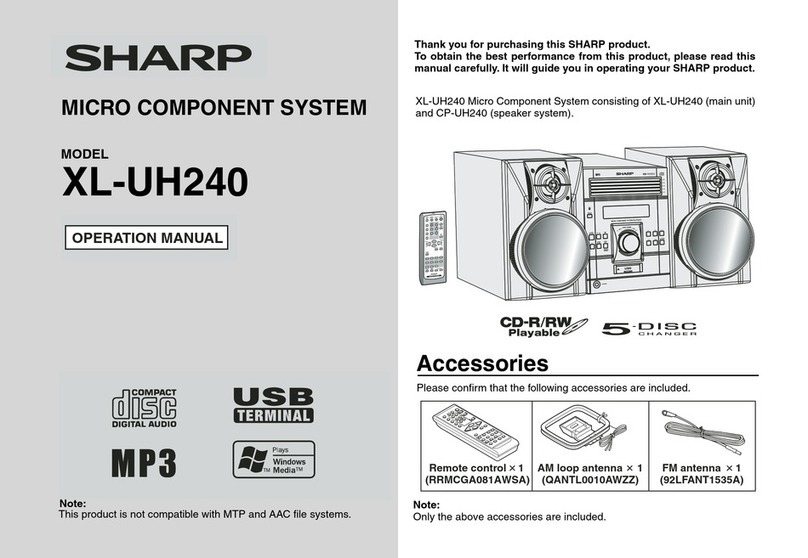2
HCD-DX70
TABLE OF CONTENTS
1. GENERAL ·········································································· 4
2. DISASSEMBLY
2-1. Case (Top) ·········································································· 5
2-2. Loading Panel ····································································· 6
2-3. Front Panel Section ···························································· 6
2-4. Tape Mechanism Deck ······················································· 7
2-5. CD SW Board, Panel Board, Pad Switch Board ················ 7
2-6. Main Trans Board ······························································· 8
2-7. Main Board, Power Board ·················································· 8
2-8. SW Board, Head (A) Board, Head (B) Board ···················· 9
2-9. Base Unit ············································································ 9
2-10. Driver Board, Motor Board, CD Sensor Board and
Video Board ······································································ 10
3. TEST MODE ···································································· 11
4. MECHANICAL ADJUSTMENTS ····························· 15
5. ELECTRICAL ADJUSTMENTS ······························· 15
6. DIAGRAMS
6-1. Circuit Board Location ····················································· 21
6-2. Block Diagrams ································································ 22
6-3. Schematic Diagram – BD Section – ································· 24
6-4. Printed Wiring Board – BD Section – ······························ 25
6-5. Printed Wiring Board – Main Section – ··························· 26
6-6. Schematic Diagram – Main (1/4) Section – ····················· 27
6-7. Schematic Diagram – Main (2/4) Section – ····················· 28
6-8. Schematic Diagram – Main (3/4) Section – ····················· 29
6-9. Schematic Diagram – Main (4/4) Section – ····················· 30
6-10. Schematic Diagram – Video SW Section – ······················ 31
6-11. Printed Wiring Board – Video SW Section – ··················· 31
6-12. Printed Wiring Board – Power AMP Section – ················ 32
6-13. Schematic Diagram – Power AMP Section – ··················· 33
6-14. Printed Wiring Board – Panel Section – ··························· 34
6-15. Schematic Diagram – Panel Section – ····························· 35
6-16. Printed Wiring Boards – Switch Section – ······················· 36
6-17. Schematic Diagram – Switch Section – ··························· 37
6-18. Printed Wiring Boards – Leaf SW Section – ···················· 38
6-19. Schematic Diagram – Leaf SW Section – ························ 39
6-20. Printed Wiring Boards – Driver Section – ························ 40
6-21. Schematic Diagrams – Driver Section – ·························· 41
6-22. Printed Wiring Board – Trans Section – ··························· 42
6-23. Schematic Diagram – Trans Section – ····························· 43
6-24. IC Pin Functions ······························································· 44
6-25. IC Block Diagrams ··························································· 48
7. EXPLODED VIEWS
7-1. Main Section ····································································· 51
7-2. Front Panel Section ·························································· 52
7-3. Chassis Section ································································· 53
7-4. Tape Mechanism Section-1 (TCM-230MWR41) ············· 54
7-5. Tape Mechanism Section-2 (TCM-230AWR41) ·············· 55
7-6. CD Mechanism Deck Section (CDM58E-30BD60) ········ 56
7-7. Base Unit Section (BU-30BD60) ····································· 57
8. ELECTRICAL PARTS LIST ······································· 58
